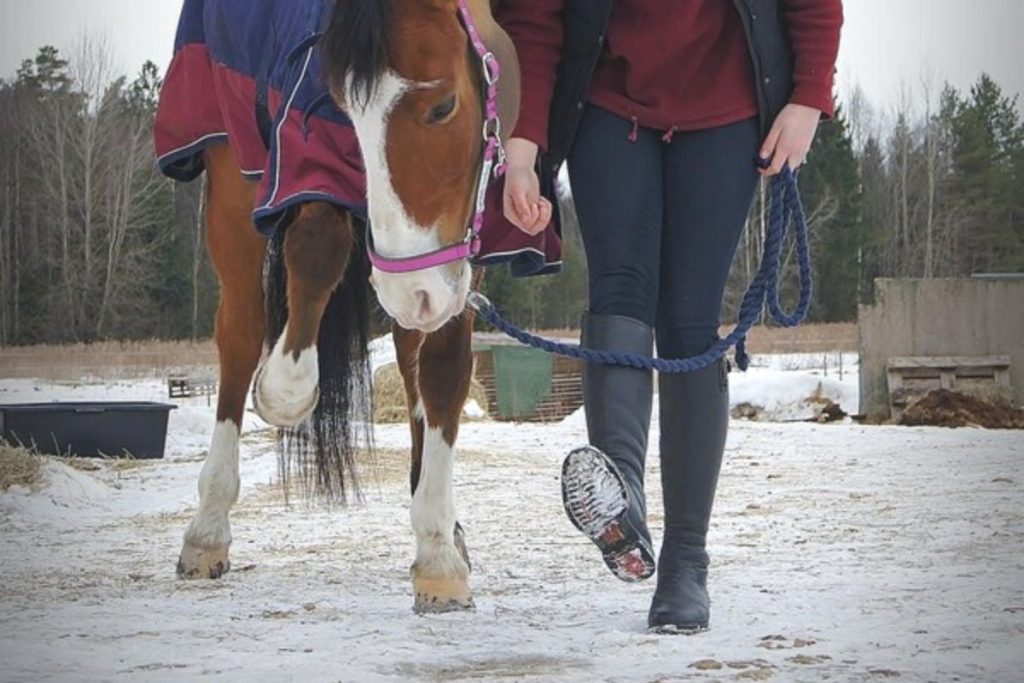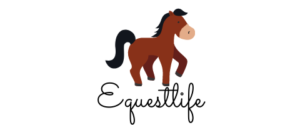Horses are beautiful and majestic creatures. There are times when you will see a horse digging holes in the ground. This specific behavior is sometimes used for different means of communication. However, if the action is seen as a repeated behavior in your horse, it could be a more serious matter
Is your horse digging holes? This might be why. As mentioned previously, if this action is seen repeatedly in your horse, then this is a disease known as pawing. This behavior can become a habit for the horse. It stems from agitation, loss of patience, or being bored.
A horse digging holes in the ground, if done repeatedly with a loss of its present surroundings, is known as the pawing disease. At the same time, a horse can simply be pawing at the ground because it’s communication with the other horses. Therefore, there are specific signs to look out for in your horse to make sure that they are not experiencing the pawing disease.
Why Do Horses Dig in the Dirt?
The most common reasons for a horse pawing or digging in the dirt is due to the horse being bored, frustrated, hungry, too much energy, lonely, or copying the action done by others. This is not a severe case but is a possible sign of a horse communication with you or other horses in its general area. On the one hand, this is not a bad thing, on the other hand, if the horse is repeatedly showing signs of pawing with a lack of motivation to pay attention to its surrounding environment. Then, the horse may need to be check up on due to the pawing disease.
Pawing Disease
The pawing disease done with the horse forelegs is mainly caused by boredom; if a horse isn’t out and moving for an extended period, the horse will lose interest and become agitated. Similar to how you may not be able to be sitting in your room for a long time, and you need to get up and move about in a different space. A horse is in a similar situation. They will need to be taken out of their stall and walked, ridden, or let out into the pasture or fields so that they can get some exercise.

Pawing can also be a sign of showing dominance. The next section will talk about a horse’s body language. It will explain what to look out for in a horse so that you don’t mistake a simple means of communication for the pawing disease.
Horse Body Language
Pawing this is done with the forelegs in an arching action. The horse is usually bored or edgy while being tied to a post or in a stall. It is also a sign of stress from being in a trailer too long or from being hungry. In sporadic cases, pawing is a sign of anger. If your horse is forcefully pawing combined with pinned ears, you will need to be careful with your horse, yourself, and the other horses.
Stomping this is a common sign of annoyance. This action is done by the foot forcefully raising and lowering in the same spot. The stomping action is usually nothing serious. The horse could merely be trying to remove a fly in its hoof. Another reason for stomping may be that the horse is frustrated with what you are doing. So be careful so that your horse doesn’t resort to using more robust means of communication.
Striking be very careful or else you may get hurt. Stomping is a forceful forward kicking move using the front leg. It’s used as either aggressive or a defensive mechanism.
What You Need to Know: Symptoms
First of all, you can check to see if your horse is using its front hooves to paw or dig the ground, stall floor, or other surfaces. The pawing may indicate that the horse is seeking attention for a specific need, i.e., water or food. Other reasons for pawing may include tiredness and lack of/unused energy from not enough exercise.
As mentioned before, in the body language section, the horse will use pawing as a means of communication. In some cases, to show dominance over their territory towards handlers or other horses.
Lastly, be on the lookout for any of these symptoms in your horse and handle them with care. Also, make sure to take your horse out for exercise and have them regularly check so that the pawing disease doesn’t happen again or affect the other horses if you have them.

How to Prevent Excessive Pawing
- Exercise
- In the same way that you become stiff after standing or sitting for a long time, and you feel the need to stretch yourself out horses are the same. No one is going to be feeling very comfortable after standing or sitting for a long time, and thus the joints become stiff and sore. Once you move around and stretch to get the blood flowing, you feel a lot better.
- Exercise is vital to keep your horse happy and healthy. It strengthens and builds the muscles, increases blood flow, creates positive endorphins, and increases brain activity.
- Good Management
- Track how often and how long your horse is getting exercise. There is a possibility that you may need to increase the type or amount of activity that your horse is doing.
- Create a feeding schedule with two or more mealtimes a day. This will help reduce stress and create a stable, consistent life pattern that your horse will follow.
- Stable cleanliness and interaction with other horses are also important factors that will help reduce stress and boredom.
- Check for injuries. Your horse may have injured itself and is digging a hole in the ground to relieve the pain somewhere on its body.
- Watching out for Copy-Cats and Learned Behaviors
- Just like humans, horses will copy-cat each other’s actions and mannerisms. For example, you are training one of your horses to pull a rope that’s attached to a bell. When the horse rings the bell, it receives a treat. Another one of your horses is watching, and it copies what the first horse’s actions to obtain the treat without you teaching the horse. This would be an example of mimicry.
- Following the example, you have taught the horse to ring the bell, but at a specific time of day. The horse will go to ring the bell every day at the specified time because the training has become a learned behavior. If a horse sees another horse digging holes in the ground and continually follows the movement, it can turn into a learned behavior.
- If you see your horse mimicking digging, make sure to stop and remove your horse from the hole carefully. Then firmly tell your horse “No” to as if disciplining a child. Eventually, your horse will learn not to dig holes.
As a reminder, not all pawing is a bad thing. At times your horse may only be communicating to you, through learned behavior, that it’s hungry and wants to be fed. Other times, your horse may be communicating with the other horses around it or expressing its emotional state. Therefore, make sure to carefully observe how long your horse has been in a stall, pay attention to body language, and make sure that you are using proper management.
Now that you know why your horse is digging holes, whether it be in the dirt, in the fields, or their stalls, you are saddled up with enough knowledge so that you can better care for your horse.
